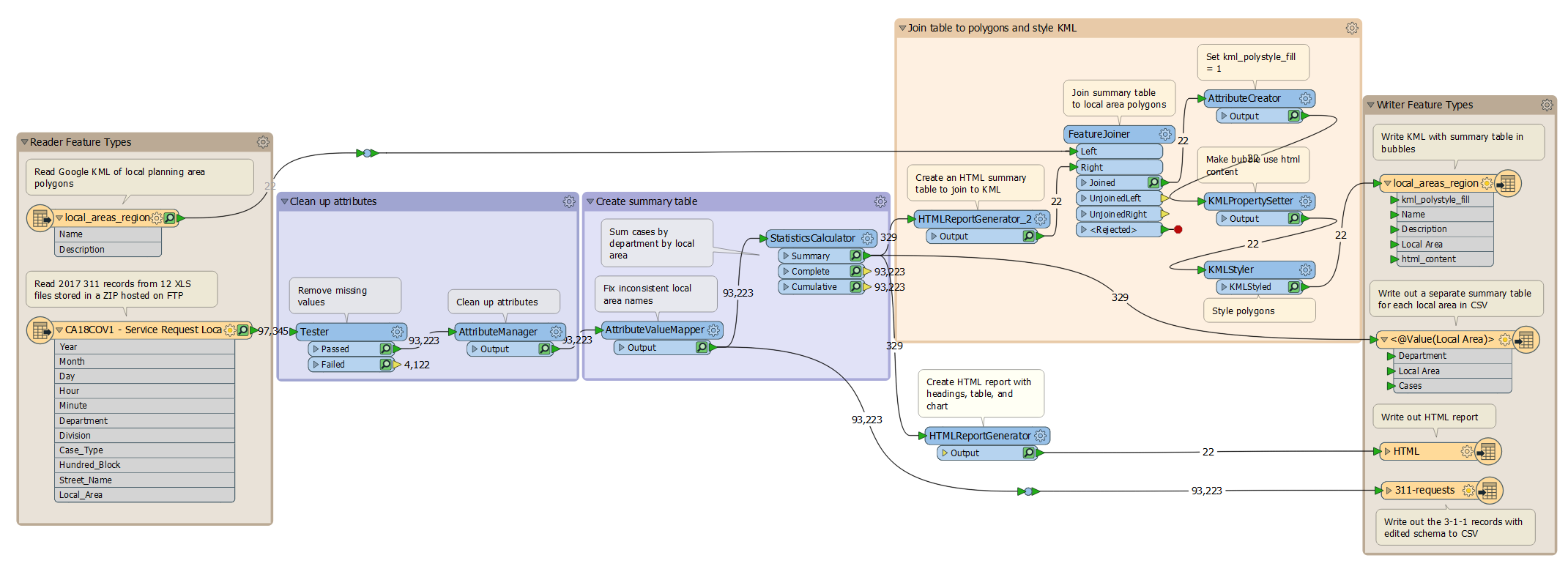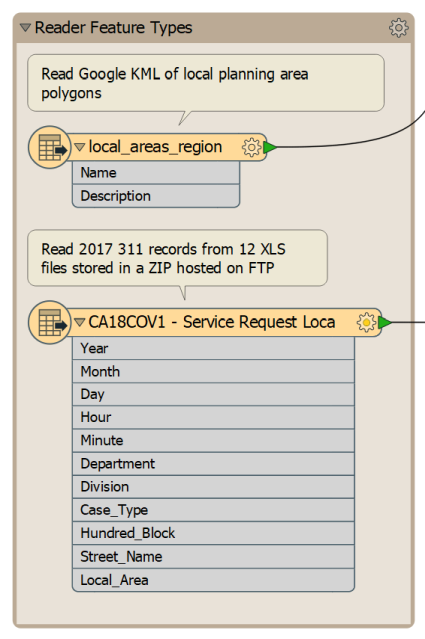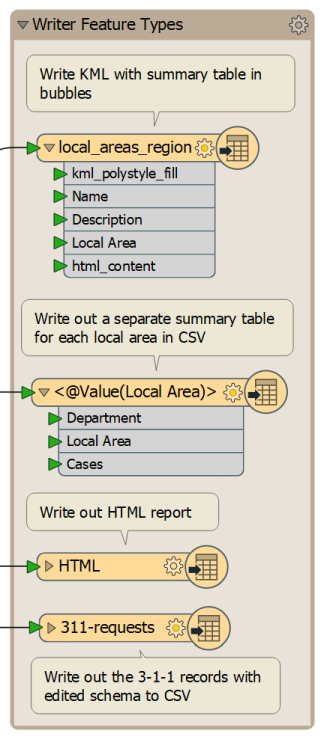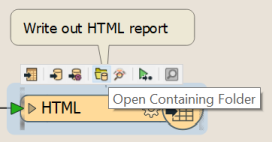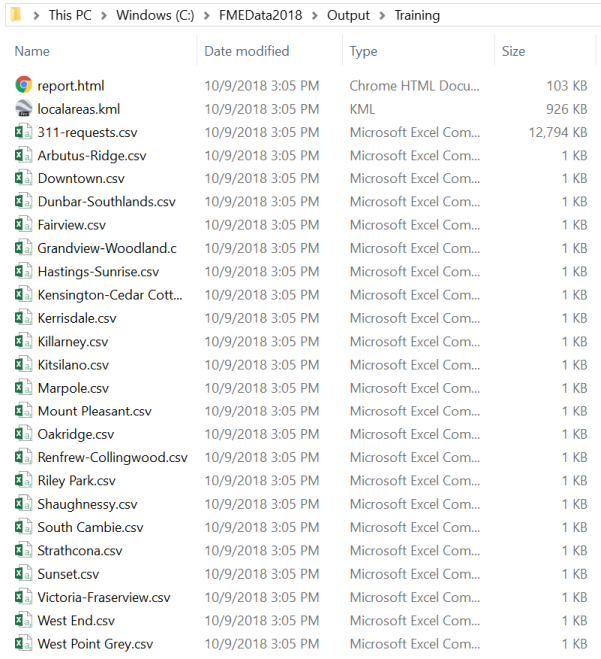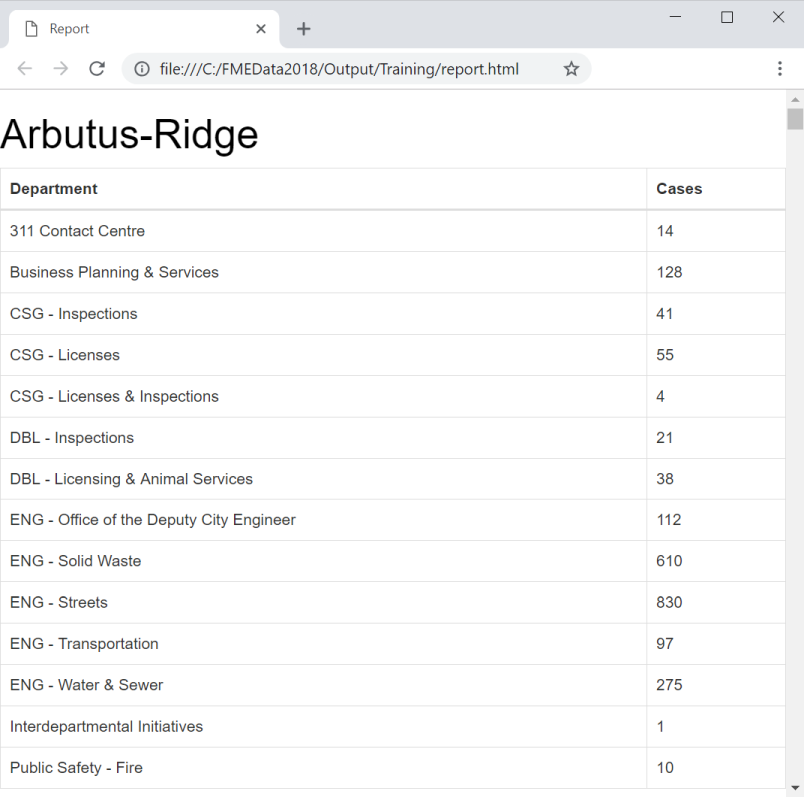| Exercise 1.1 | Opening and Running a Workspace |
| Data | 3-1-1 call records (CSV) Local planning areas (KML) |
| Overall Goal | To open and run an FME workspace to explore what it can do with data |
| Demonstrates | Opening and running a workspace |
| Start Workspace | C:\FMEData2018\Workspaces\IntroToDesktop\Ex1.1-Begin.fmw |
| End Workspace | None |
Rather than trying to explain what FME is and does, let's try it for ourselves! In this exercise you will open the completed version of the FME workspace you will create in this module's exercises. We will explore it, run it, and look at the output.
The workspace provides an example of how a municipal government could use FME to summarize 3-1-1 call records. 3-1-1 is a special phone number used by municipalities in Canada and the United States to manage non-emergency municipal service calls.
1) Locate Workspace File
Translations and transformations in FME are defined in an FMW file.
Using a file explorer, browse to the file C:\FMEData2018\Workspaces\IntroToDesktop\Ex1.1-Begin.fmw:
Double-click on the file. It will open an application called FME Workbench.
2) Explore FME Workspace
When FME Workbench opens you will see the option of completing Getting Started exercises. You can complete these now if you wish, or come back to them later. For now, click the X to close the window.
The central part of the application will look like this (click to expand):
This area is the canvas. It is where the translation and transformation of data are defined graphically. Although it might appear complicated, it does not take much practice with FME to create workflows of this type.
Examine the left-hand side of the canvas:
This area is where we read data. At the top is a KML file called local_areas_region, containing a map of local planning areas. Below that is a spreadsheet of 3-1-1 call records stored in an Excel spreadsheet (XLSX). It is the "E" (Extract) part of ETL.
Now look at the right-hand side:
This area is where we write data, in this case, a report of the call records in HTML (web page) and CSV (spreadsheet) format, plus a KML map. It is the "L" (Load) part of ETL.
In between the reader and writer are objects that transform data. They represent the "T" (Transform) part of ETL.
Labels and other annotations show us what the workspace does:
- Reads 3-1-1 data from CSV
- Cleans the data by removing missing values and fixing inconsistent values
- Removes attributes that aren't needed in the reports
- Summarizes the number of cases by department for each local planning area, writing the results to CSV
- Generates HTML reports with a table and graph for each local area
- Writes the graph and table to HTML
- Joins the table to the KML of local areas, sets some KML properties, and writes the map to KML
3) Run FME Workspace
Let's run this workspace. To do this click on the Green run button on the Workbench toolbar:
The workspace will now run. As it does so, you will see messages pass by in the Translation Log window.
4) Locate and Examine Output
Once the translation is complete, click on the HTML writer feature type. Choose the option to Open Containing Folder:
In the Explorer dialog that opens you will find the HTML report, a KML file, and CSV datasets:
Open a web browser such as Firefox or Chrome. Open the report.html file created by FME (Ctrl+O or File > Open is the easiest way). You will see a table and a graph of the total number of cases by department for each local planning area. FME generated all of this from the original Excel spreadsheets:
This small demonstration illustrates the power of FME. This workspace read data from multiple datasets and wrote it out to datasets in both spatial and spreadsheet (i.e., tabular) formats. In between it carried out a series of transformations, creating added value and information.
| CONGRATULATIONS |
By completing this exercise, you have learned how to:
|

